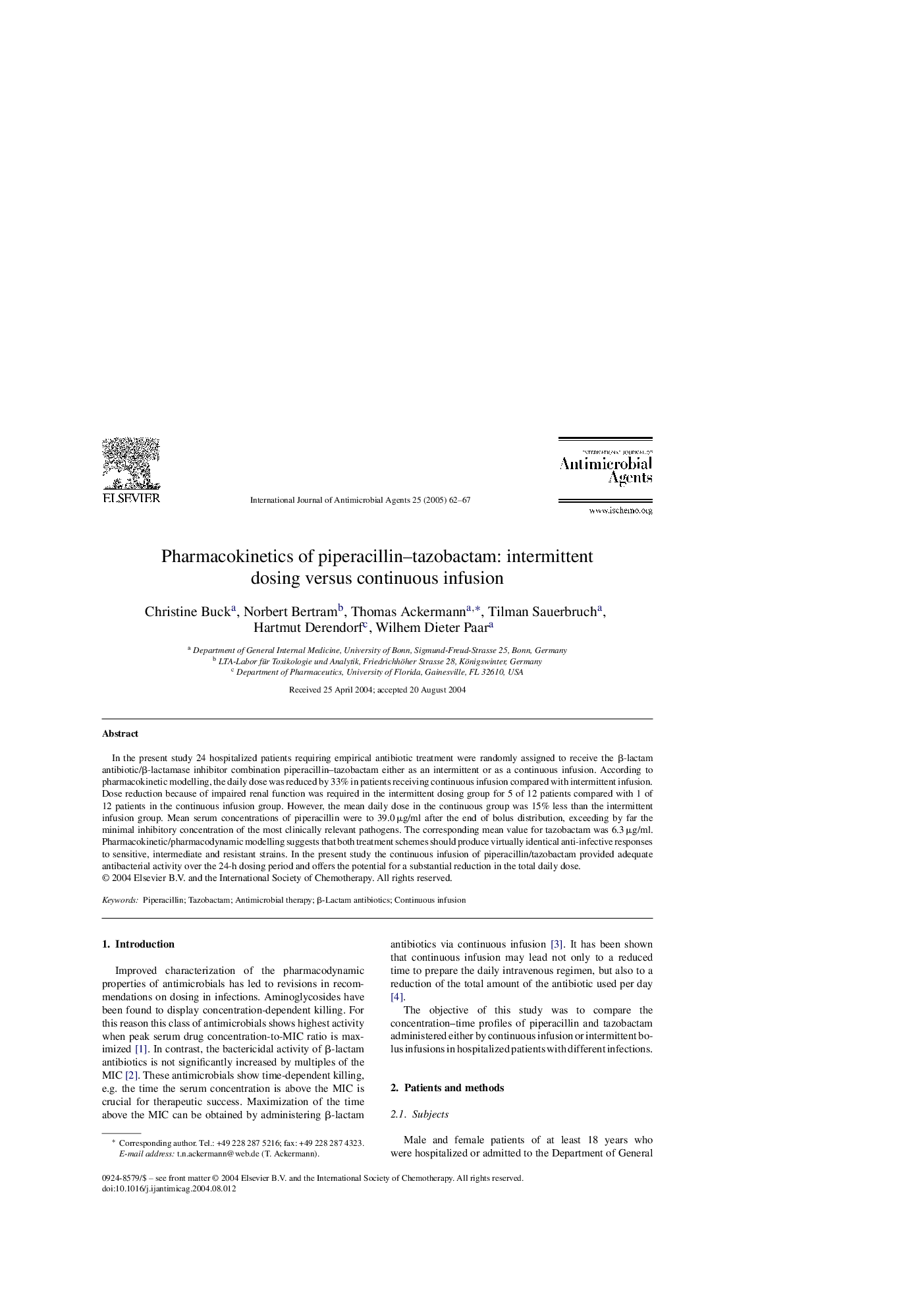| Article ID | Journal | Published Year | Pages | File Type |
|---|---|---|---|---|
| 10028017 | International Journal of Antimicrobial Agents | 2005 | 6 Pages |
Abstract
In the present study 24 hospitalized patients requiring empirical antibiotic treatment were randomly assigned to receive the β-lactam antibiotic/β-lactamase inhibitor combination piperacillin-tazobactam either as an intermittent or as a continuous infusion. According to pharmacokinetic modelling, the daily dose was reduced by 33% in patients receiving continuous infusion compared with intermittent infusion. Dose reduction because of impaired renal function was required in the intermittent dosing group for 5 of 12 patients compared with 1 of 12 patients in the continuous infusion group. However, the mean daily dose in the continuous group was 15% less than the intermittent infusion group. Mean serum concentrations of piperacillin were to 39.0 μg/ml after the end of bolus distribution, exceeding by far the minimal inhibitory concentration of the most clinically relevant pathogens. The corresponding mean value for tazobactam was 6.3 μg/ml. Pharmacokinetic/pharmacodynamic modelling suggests that both treatment schemes should produce virtually identical anti-infective responses to sensitive, intermediate and resistant strains. In the present study the continuous infusion of piperacillin/tazobactam provided adequate antibacterial activity over the 24-h dosing period and offers the potential for a substantial reduction in the total daily dose.
Related Topics
Life Sciences
Immunology and Microbiology
Applied Microbiology and Biotechnology
Authors
Christine Buck, Norbert Bertram, Thomas Ackermann, Tilman Sauerbruch, Hartmut Derendorf, Wilhem Dieter Paar,
